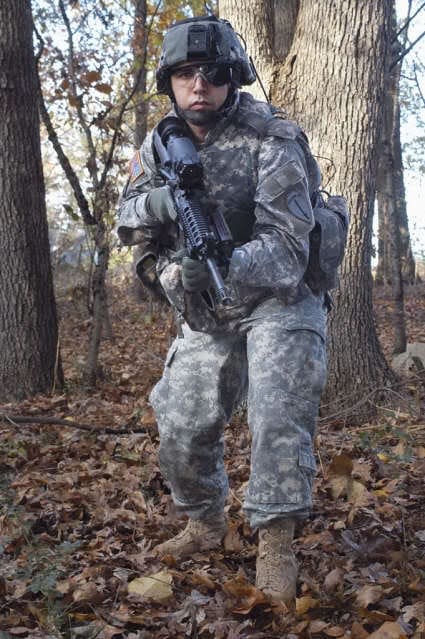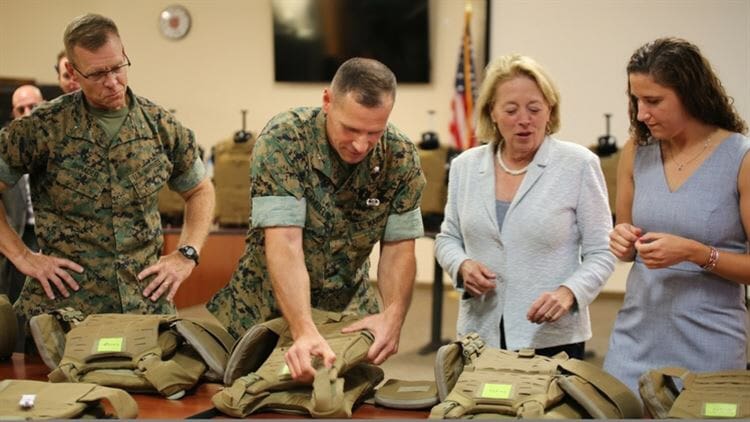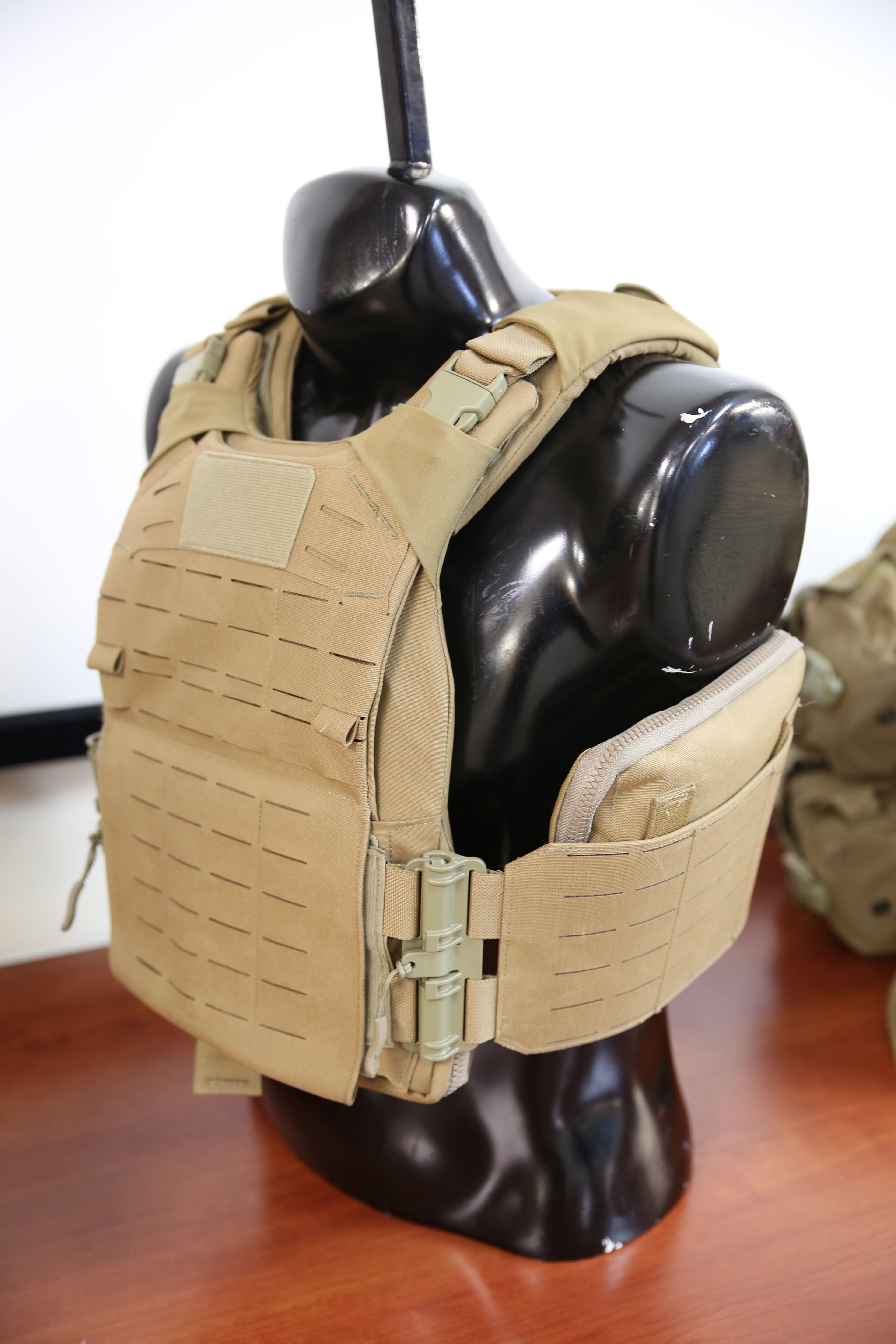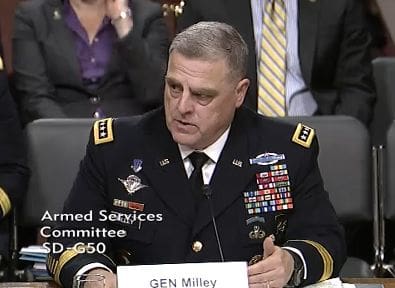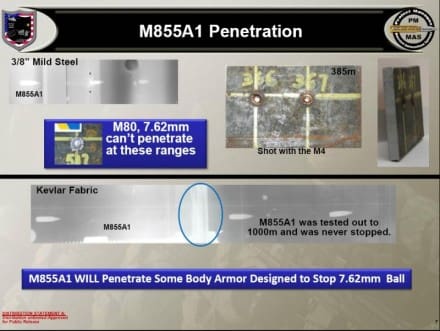The Senate Armed Services Committee’s Airland Subcommittee is concerned with overmatch of US small arms by threat systems. This Statement for the Record to the Senate Armed Services Committee was offered to on May 18, 2017, By Major General (Retired) Robert H. Scales.
Mr. Chairman: Thank you very much for the opportunity to appear before your subcommittee. I’ve waited many years for this moment.
Since the end of World War II the richest and most technologically advanced country in the world has sent its Soldiers and Marines into combat with inferior small arms. So inferior, fact, that thousands have died needlessly. They died because the Army’s weapon buying bureaucracy has consistently denied that a Soldier’s individual weapon is important enough to gain their serious attention.
The stories are a century old and as new as today. The venerable “Ma Deuce” 50 caliber machine gun, the one most Soldiers use in mounted combat, will celebrate its 100th anniversary in 2019. Try to imagine any service (other than our ground services) still holding on to a centenarian for a weapon. The M249 Squad Automatic Weapon performed so badly in Iraq and Afghanistan that the last commandant of the Marine Corps wrote a check to get rid of it in infantry squads. He replaced it with the superb HK 416, the finest automatic rifle in the free world. By the way it was a German made HK, not an American weapon, that killed bin Laden.
After fifteen years of testing and a $175 million investment the Army achieved a breakthrough with acceptance of the XM 25 grenade launcher. This amazing weapon fires a “smart” grenade that uses a laser to determine the range to an enemy hiding behind defilade, then transmits that data to the grenade. The XM 25 reaches out with great precision to 500 meters or more and detonates the grenade directly over the head of an enemy hiding behind a wall or inside a building. No longer will the Taliban be able to huddle under cover until our infantry fires slacken before he runs away. Now he has nowhere to run. The XM 25 is the first truly revolutionary small arms technology the Army has developed in almost half a century. By the way, the Army leadership canceled the XM 25 program last week.
The Army’s Acquisition Community wasn’t able to select something as simple as a pistol. After eight years and millions of dollars the only product they produced was a 400-page written “Request for Proposal” for an off the shelf commercial pistol. It took an enraged Chairman of this Committee and weekly interventions by the Army Chief of Staff to force the acquisition bureaucrats to pick the German made Sig Sauer pistol and get on with buying it for our Soldiers.
The most horrific story has to be the one about the rifle. During my 35 years in the Army, it became clear to me that from Hamburger Hill to the streets of Baghdad that the American penchant for arming troops with lousy rifles has been responsible for a staggering number of unnecessary deaths. In wars fought since World War II, the vast majority of men and women in uniform have not engaged in the intimate act of killing. Their work is much the same as their civilian counterparts’. It is the infantryman’s job to intentionally seek out and kill the enemy, at the risk of violent death. The Army and Marine Corps infantry, joined by a very small band of Special Operations forces, comprises roughly 50,000 soldiers, some 4 percent of uniformed Defense Department employees. During World War II, 70 percent of all soldiers killed at the hands of the enemy were infantry. In the wars since, that proportion has grown to about 80 percent. These are the (mostly) men whose survival depends on their rifles and ammunition.
In combat, an infantryman lives an animal’s life. The primal laws of tooth and fang determine whether he will live or die. Killing is quick. Combat in Afghanistan and Iraq reinforces the lesson that there is no such thing in small?arms combat as a fair fight. Infantrymen advance into the killing zone grimy, tired, confused, hungry, and scared. Their equipment is dirty, dented, or worn. They die on patrol from ambushes, from sniper attacks, from booby traps and improvised explosive devices. They may have only a split second to lift, aim, and pull the trigger before the enemy fires. Survival depends on the ability to deliver more killing power at longer ranges and with greater precision than the enemy.
Any lost edge, however small, means death. A jammed weapon, an enemy too swift and elusive to be engaged with aimed fire, an enemy out of range yet capable of delivering a larger volume of return fire—any of these cancel out all the wonderfully superior and expensive American air- and sea-based weapons that may be fired in support of ground troops. There’s also a moral dimension as well. An infantryman who perceives that his weapon is inferior loses confidence in the close fight and might well hold back fearing that his opponent can kill him at greater range and with more precision. A soldier in basic training is told that his rifle is his best friend and his ticket home. If the lives of so many depend on a rifle why can’t the richest country in the world give it to them?
The answer is both complex and simple. The M4, the standard carbine in use by the infantry today, is a lighter version of the M16 rifle that killed so many of the soldiers who carried it in Vietnam. (The M16 is still also in wide use today.) In the early morning of July 13, 2008, nine infantrymen died fighting off a Taliban attack at a combat outpost near the village of Wanat in Afghanistan’s Nuristan province. Some of the soldiers present later reported that in the midst of battle their rifles overheated and jammed. The Wanat story is reminiscent of experiences in Vietnam: in fact, other than a few cosmetic changes, the rifles from both wars are virtually the same. And the M4’s shorter barrel makes it less effective at long ranges than the older M16, an especially serious disadvantage in modern combat, which is increasingly taking place over long ranges.
The M16 started out as a stroke of genius by one of the world’s most famous firearms designers. In the 1950s, an engineer named Eugene Stoner used space age materials to improve the Army’s then standard infantry rifle, the M14. The 5.56mm cartridge Stoner chose for his rifle was a modification not of the M14’s cartridge but of a commercial Remington rifle cartridge that had been designed to kill small varmints. His invention, the AR15, was light, handy, and capable of controlled automatic fire. It outclassed the heavier, harder recoiling M14. Yet the Army was again reluctant to change. As James Fallows observed in 1981, it took the “strong support” of President Kennedy and Defense Secretary Robert McNamara to make the Army consider breaking its love affair with the large caliber M14. In 1963, it slowly began adopting Stoner’s invention.
The “militarized” adaptation of the AR15 was the M16. Militarization—more than 100 proposed alterations to supposedly make the rifle combat ready—ruined the first batch to arrive at the front lines, and the cost in dead soldiers was horrific. A propellant ordered by the Army left a powder residue that clogged the rifle. Finely machined parts made the M16 a “maintenance queen” that required constant cleaning in the moisture, dust, and mud of Vietnam. In time, the Army improved the weapon—but not before many U.S. troops died.
Not all the problems with the M16 can be blamed on the Army. Buried in the M16’s, and now the M4’s, operating system is a flaw that no amount of militarizing and tinkering has ever erased. Stoner’s gun cycles cartridges from the magazine into the chamber using gas pressure vented off as the bullet passes through the barrel. Gases traveling down a very narrow aluminum tube produce an intense “puff” that throws the bolt assembly to the rear, making the bolt assembly a freely moving object in the body of the rifle. Any dust or dirt or residue from the cartridge might cause the bolt assembly, and thus the rifle, to jam.
In contrast, the Soviet AK-47 (and most other western designed assault rifles) cycle rounds using a solid operating rod attached to the bolt assembly. The gas action of the AK-47 throws the rod and the bolt assembly back as one unit, and the solid attachment means that mud or dust will not prevent the gun from functioning. Fearing the deadly consequences of a “failure to feed” in a fight, some top?tier Special Operations units like Delta Force and SEAL Team Six use a more modern and effective rifle with a more reliable operating rod mechanism. But front line Army and Marine riflemen still fire weapons much more likely to jam than the AK-47. Failure to feed affects every aspect of a fight. A Russian infantryman can fire about 140 rounds a minute without stopping. The M4 fires at roughly half that rate. Today it still jams after overheating and in dusty field conditions, just like in close combat. In the open terrain of Afghanistan, the M4 is badly out ranged by Taliban weapons manufactured before the First World War.
Sadly, until very recently the Army has done all it could to cover up the poor performance of the M 4. After my article “Gun Trouble” appeared in January’s Atlantic Magazine Army Public Affairs responded that the weapon was fine, as good as it could be. Then Rowan Scarborough of the Washington Times revealed a few months later that the M-4 was undergoing over 140 improvements. So, Rowan asked: “why, if the gun was so perfect in January, was it necessary to rebuild it a few months later?” Remember we aren’t talking about stealth, encryption or lines of code here. There are no interoperability and integration issues. Nothing is hidden deeply in Area 51. It’s a seven-pound piece of plastic and steel.
What should a next generation, all purpose infantry rifle look like? It should be modular. Multiple weapons can now be assembled from a single chassis. A squad member can customize his weapon by attaching different barrels, buttstocks, forearms, feed systems, and accessories to make, say, a light machine gun, a carbine, a rifle, or an infantry automatic rifle.
The military must change the caliber and cartridge of the guns it gives infantry soldiers. Stoner’s little 5.56mm cartridge was ideal for softening the recoil of World War II infantry calibers in order to allow fully automatic fire. But today’s cartridge is simply too small for modern combat. Its lack of mass limits its range to less than 400 meters. The civilian version of the 5.56?mm bullet was designed as a “varmint killer” and six states prohibit its use for deer hunting because it is not lethal enough to ensure a quick kill. The optimum caliber for tomorrow’s rifle is between 6.5 and 7 millimeters. The cartridge could be made almost as light as the older brass cased 5.56mm by using a plastic shell casing, which is now in final development by the Marine Corps.
The Army can achieve an infantry version of stealth by attaching newly developed sound suppressors to every rifle. Instead of merely muffling the sound of firing by trapping gases, this new technology redirects the firing gases forward, capturing most of the blast and flash well inside the muzzle. Of course, an enemy under fire would hear the muted sounds of an engagement. But much as with other stealth technology, the enemy soldier would be at a decisive disadvantage in trying to determine the exact location of the weapons firing at him.
Computer miniaturization now allows precision to be squeezed into a rifle sight. All an infantryman using a rifle equipped with a new model sight need do is place a red dot on his target and push a button at the front of his trigger guard; a computer on his rifle will take into account data like range and “lead angle” to compensate for the movement of his target, and then automatically fire when the hit is guaranteed. This rifle sight can “see” the enemy soldier day or night at ranges well beyond 600 meters. An enemy caught in that sight will die long before he could know he was seen, much less before he could effectively return fire.
But infantrymen today do not use rifles equipped with these new sights. Hunters do. In fact, new rifles and ammunition are readily available. They are made by many manufacturers—civilian gun makers and foreign military suppliers that equip the most?elite Special Operations units. Unlike conventional infantry units, top tier Special Operations units are virtually unrestricted by cumbersome acquisition protocols, and have had ample funding and a free hand to solicit new gun designs from private industry.
These units test new guns in combat, often with dramatic results: greater precision, greater reliability, greater killing power.
The Army has argued that, in an era of declining resources, a new rifle will cost more than $2 billion. But let’s say the Army and Marine Corps buy new rifles only for those who will use them most, namely the infantry. The cost, for about 100,000 infantrymen at $1,000 each, is then reduced to roughly $100 million, less than that of a single F?35 fighter jet. The Army and the Marine Corps can keep the current stocks of M4s and M16s in reserve for use by non?infantry personnel in the unlikely event that they find themselves in combat.
What to Do…
There is some good news in this doleful saga. Since 911 the M4 has been marginally effective against poorly equipped and armed insurgents like al Qaeda, ISIS and the Taliban. But reports about the fighting effectiveness of Putin’s well equipped little green men is disturbing. The Russians have spent their defense rubles wisely investing in a new family of assault rifles and the new Ratnick soldier systems that include a new soldier suite for protection, small arms and communications. Putin’s philosophy is to spend money only on units he needs to advance his national security aims: Spetnaz, GRU, naval infantry, airborne infantry and special armored units.
The Army now realizes that the varmint gun can’t defeat Russian body armor and is easily outranged by the latest Russian small arms. Senior leaders are now calling for the adoption of a “middle caliber” bullet and a new rifle to shoot it. It’s about time. The problem is that the Army’s turgid acquisition gurus want seven years to develop the new rifle.
Mr. Chairman, seven years is too long. With your help, we can develop and field the rifle our Soldiers and Marines deserve in about a year. Here is what we should do:
For the 2018 National Defense Authorization Act, we request that you authorize 100 Million dollars to support an open competition to development a new family of dominant small arms. This single authorization should expire in a year. The effort should be run and overseen by ground combat arms officers and Non-Commissioned Officers. The Executive for managing this effort should be a consortium of the Ground Service Chiefs and the Commander, Special Operations Command. No acquisition agencies from any service should be involved in executive decision making or the management of the competition.
Competition will be open to anyone, small business, big business, foreign, domestic or even clever individuals. After one year the consortium leadership will conduct the shoot- off. The shoot off will be open to all services, the media and congress and anyone from the public who is interested. Results will be scored and posted daily on a web site.
The new rifle requirements document will be one page. It will speculate only six characteristics:
· First the rifle must be modular capable of being converted in the field to a carbine, rifle, machine gun or sniper rifle.
· Second, it will fire an intermediate caliber bullet probably a military version of the venerable Remington 270.
· Third, the rifle will be suppressed. A muzzle suppressor greatly reduces a rifle’s report and in the confusion of a close fight a quieter rifle gives a decided advantage.
· Fourth, the new rifle will use a solid recoiling action like most first-rate assault rifles.
· Fifth, the rifle should have a snap on digital sight capable of killing reliably to a range in excess of 1,000 meters.
· Sixth, the rifle should be able to fire ammunition in a polymer casing. Polymer rounds weigh 30% less than brass cartridge casings.
A desirable feature would be an attachment to allow the rifle to fire belted ammunition.
The winner would be awarded about 100 million dollars to manufacture the first 100,000 rifles, enough to equip all close combat small units in the Army and Marine Corps as well as those who fight close to the infantry to include Sappers, Fire Support Teams, and intelligence specialists. The rest of the Army and Marine Corps will do just fine with the M-4…for now.
I am not alone in calling for a significant reform of our small arms systems. Many very senior combat veterans share my passion. One in particular comes to mind. This from an often-quoted note to a friend written in 2009:
Yesterday I was at Walter Reed and among others spoke at some length with a fine young Marine infantry officer, Lt David Borden, who lost a leg in Ramadi to a suicide bomber. He lost a leg along with other serious wounds, blast killed one of his lads, wounded others. Most notably, he emptied a magazine into the man charging them, at close range, even as his fellow Marines riddled him as well at close range. Certainly, the guy was on drugs, but the bottom line was that our assault rifle did not have the stopping power to put the enemy down on first, second, third…fifteenth etc. rounds to the body…
Once the problem is well defined (we are using a rifle whose caliber is illegal for shooting small deer in nearly all states due to its lack of killing power), we will move swiftly to the solution. While I believe, the solution is 6.8mm, I’m open to whatever will work. Physics says that the best advances in bullet technology will not give us the increased stopping power/energy of the 5.56, since any improved 5.56 ammunition could only be more effective if adopted at 6.8mm or other heavier round.
The sender of the message was General James Mattis.
My grandson is ten and I’m very proud of him. He tells me he wants to be a Soldier someday. If we leave the Army’s Acquisition bureaucracy in charge of developing our next generation of small arms I’m fearful that he will be walking point some day with the same weapon that failed my Soldiers so tragically fifty years ago in Vietnam.
Please don’t allow that to happen.
www.armed-services.senate.gov/imo/media/doc/Scales_05-17-17
[COURTESY: LTC Lewis Higinbotham, USA (Ret) and passed to me by James D]




